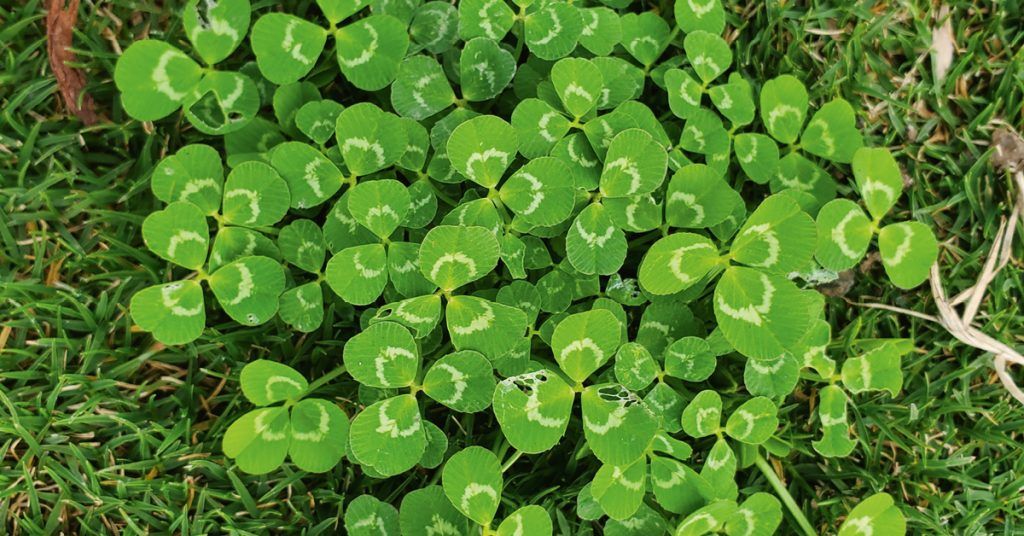How To Get Rid Of Clover In Your Lawn
Date: 26 Jun 2024
Along with the dreaded dandelion, white clover mars many lawn-covered landscapes in New Zealand. Fortunately, getting rid of it isn't as challenging as it seems.
What Does Clover Look Like?
White clover is a common sight in New Zealand lawns. Each clover plant has leaves made up of three oval leaflets, each about 1/4 inch in diameter. You'll notice a distinctive white or light-green inverted V-shaped pattern, known as a "watermark," on each leaflet. White clover produces stolons, or above-ground runners, that help it spread, forming patches in lawns, parks, and sports fields. Its white to pinkish-white flowers bloom from late spring into summer, making clover patches easily noticeable.
Why Do I Have White Clover in My Lawn?
Several factors contribute to the presence of white clover in New Zealand lawns:
Underfed Lawns: White clover thrives in underfed lawns. Fertilizing your lawn two or three times a year can help keep it clover-free. Interestingly, white clover is a legume, meaning it can fix atmospheric nitrogen and convert it into a form usable by plants. This self-fertilizing trait is why clover patches often look healthier than the surrounding grass.
Compacted Soil: Compacted soil can also lead to clover infestations. Similar to other broadleaf weeds like knotweed, dandelions, and plantain, clover can take hold in compacted areas. Annual core aeration can relieve soil compaction and help keep your lawn clover-free.
Mowing Height: Keeping your grass at a higher mowing height will promote a healthier lawn that can better compete with clover and other weeds.
How Do I Get Rid of White Clover in My Lawn?
White clover is difficult to remove by hand. Creating a healthy lawn is the best first step. Here are some effective methods to eliminate clover:
Herbicide Application: Using a quality herbicide is your best bet for removing clover. Products containing 2,4-D, MCPP, and Dicamba are effective. Herbicides with sulfentrazone, carfentrazone, fluroxypyr, quinclorac, or triclopyr offer even better results. Avoid using straight 2,4-D as it is not effective against clover.
Read Labels and Directions: Always read and follow the label and directions for use on all lawn care chemicals to avoid unintentionally harming other plants or the environment.
By following these steps, you can enjoy a clover-free lawn that is the envy of your neighborhood.
Additional Tips for Maintaining a Healthy Lawn
Beyond dealing with clover, maintaining a healthy lawn in New Zealand requires some consistent care and attention. Here are some additional tips to ensure your lawn stays lush and green:
Regular Mowing: Mow your lawn regularly, but make sure not to cut the grass too short. Aim for a mowing height of around 3-4 inches. This will help your grass develop a strong root system, which can outcompete weeds like clover.
Watering: Water your lawn deeply but infrequently. This encourages the grass roots to grow deeper, making them more drought-resistant and less prone to weed invasion. Aim to water your lawn in the early morning to reduce evaporation and prevent fungal diseases.
Fertilizing: Fertilize your lawn according to the specific needs of your grass type. Use a balanced fertilizer that provides essential nutrients like nitrogen, phosphorus, and potassium. In New Zealand, the best times to fertilize are typically in the spring and autumn.
Aeration: As mentioned earlier, aerating your lawn helps relieve soil compaction and improves water and nutrient absorption. Consider aerating your lawn at least once a year, preferably in the spring or autumn.
Overseeding: Overseeding involves spreading grass seed over your existing lawn. This helps fill in bare spots and thickens the grass, making it harder for weeds like clover to establish. Choose a grass seed mix suited to New Zealand's climate and your specific lawn conditions.
Weed Control: Stay vigilant with weed control. Regularly inspect your lawn for any signs of weeds and address them promptly. Spot-treat small patches of clover with herbicide to prevent them from spreading.
Soil Testing: Conduct a soil test to determine the pH and nutrient levels of your lawn. Based on the results, you can adjust your lawn care practices to ensure optimal growing conditions. Most grasses prefer a slightly acidic to neutral pH (6.0 to 7.0).
Environmentally Friendly Practices: Consider using organic or environmentally friendly lawn care products. These can be less harmful to beneficial insects, pollinators, and the surrounding environment. Organic fertilizers and herbicides are available and can be effective alternatives to chemical products.
Engage with Local Experts: Seek advice from local garden centers or lawn care professionals in New Zealand. They can provide tailored recommendations based on the specific conditions and challenges in your region.
By implementing these practices, you can create and maintain a healthy, beautiful lawn that resists clover and other weeds. Enjoy the process and the rewarding experience of having a vibrant green lawn that enhances the beauty of your home.
Back...
